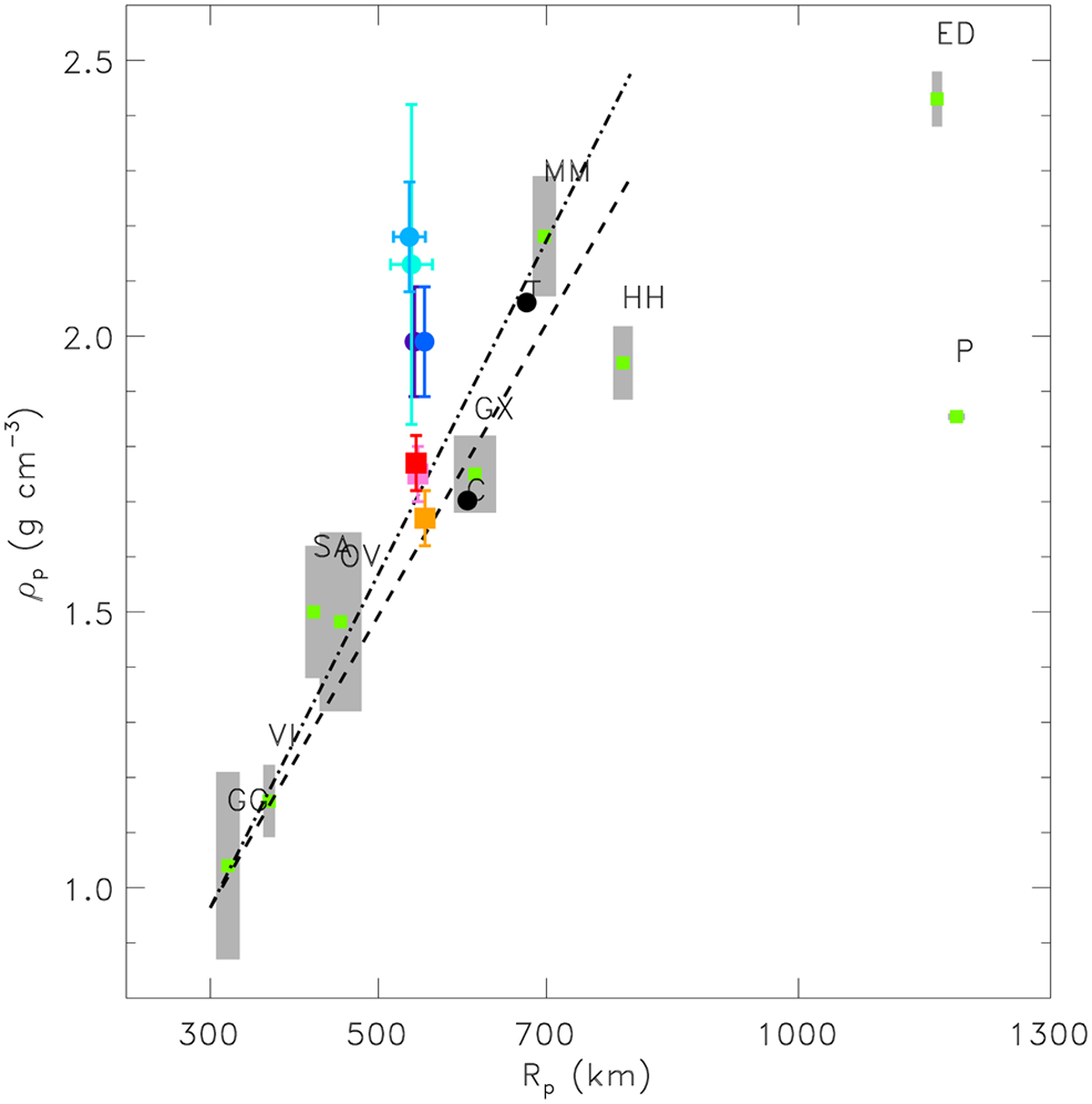Fig. 7

Download original image
Bulk density vs. size (volume equivalent radius) of the primary in the ten most massive binaries in the Kuiper belt. The binaries are labelled using the primary-secondary initials: P and C, Pluto and Charon (Nimmo et al. 2017); ED, Eris-Dysnomia (Sicardy et al. 2011; Holler et al. 2021b); HH, Haumea-Hi’iaka (Ortiz et al. 2017; Dunham et al. 2019); MM, Makemake-MK2 (Ortiz et al. 2012; Brown 2013; Parker et al. 2018); GX, Gonggong-Xiangliu (Kiss et al. 2019); OV, Orcus-Vanth (Brown & Butler 2018); SA, Salacia-Actea (Brown & Butler 2017); VI, Varda-Ilmarë (Grundy et al. 2015; Souami et al. 2020); GG, G!kúny||’hòmdímà-G!ò’é!Hú (Grundy et al. 2019). The grey boxes represent the uncertainties. The different size and density estimates for Quaoar are colour-coded, as follows: cyan: Brown & Butler (2017); light blue: Fornasier et al. (2013); dark blue: Braga-Ribas et al. (2013); purple: Pereira et al. (2023); orange: this work, TPM model OB1; pink: this work, TPM model OB2; red: this work, TPM model TC (triaxial ellipsoid with Deq = 1090 km). The original density estimate of ρ = 4.2 g cm−3 by Fraser & Brown (2010) is far outside the borders of this figure.
Current usage metrics show cumulative count of Article Views (full-text article views including HTML views, PDF and ePub downloads, according to the available data) and Abstracts Views on Vision4Press platform.
Data correspond to usage on the plateform after 2015. The current usage metrics is available 48-96 hours after online publication and is updated daily on week days.
Initial download of the metrics may take a while.


